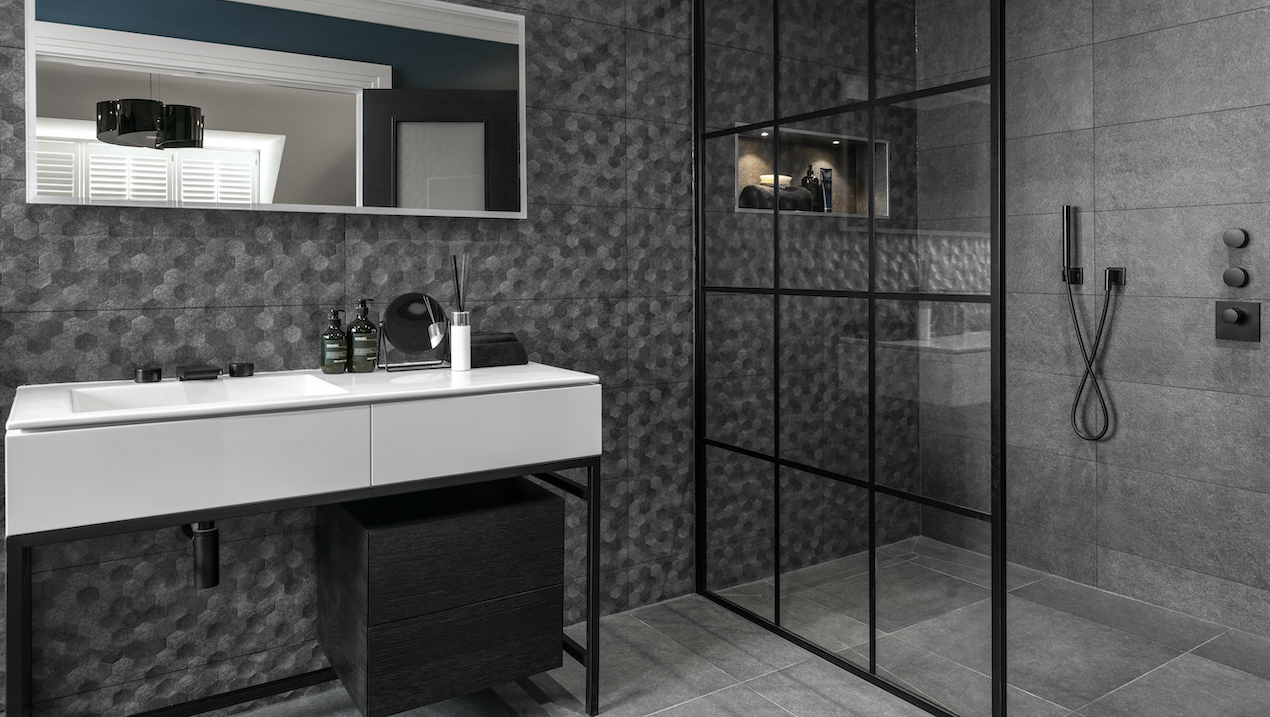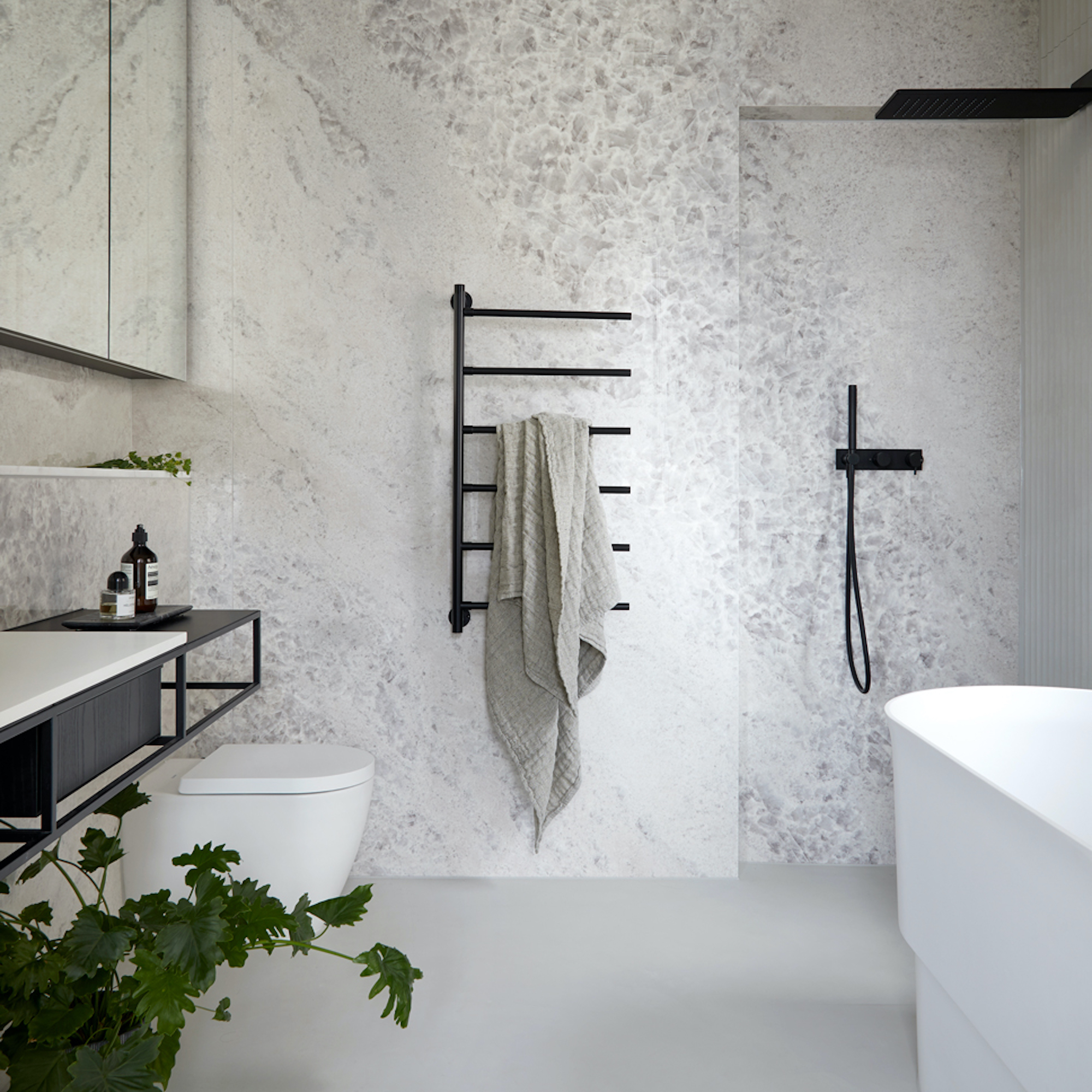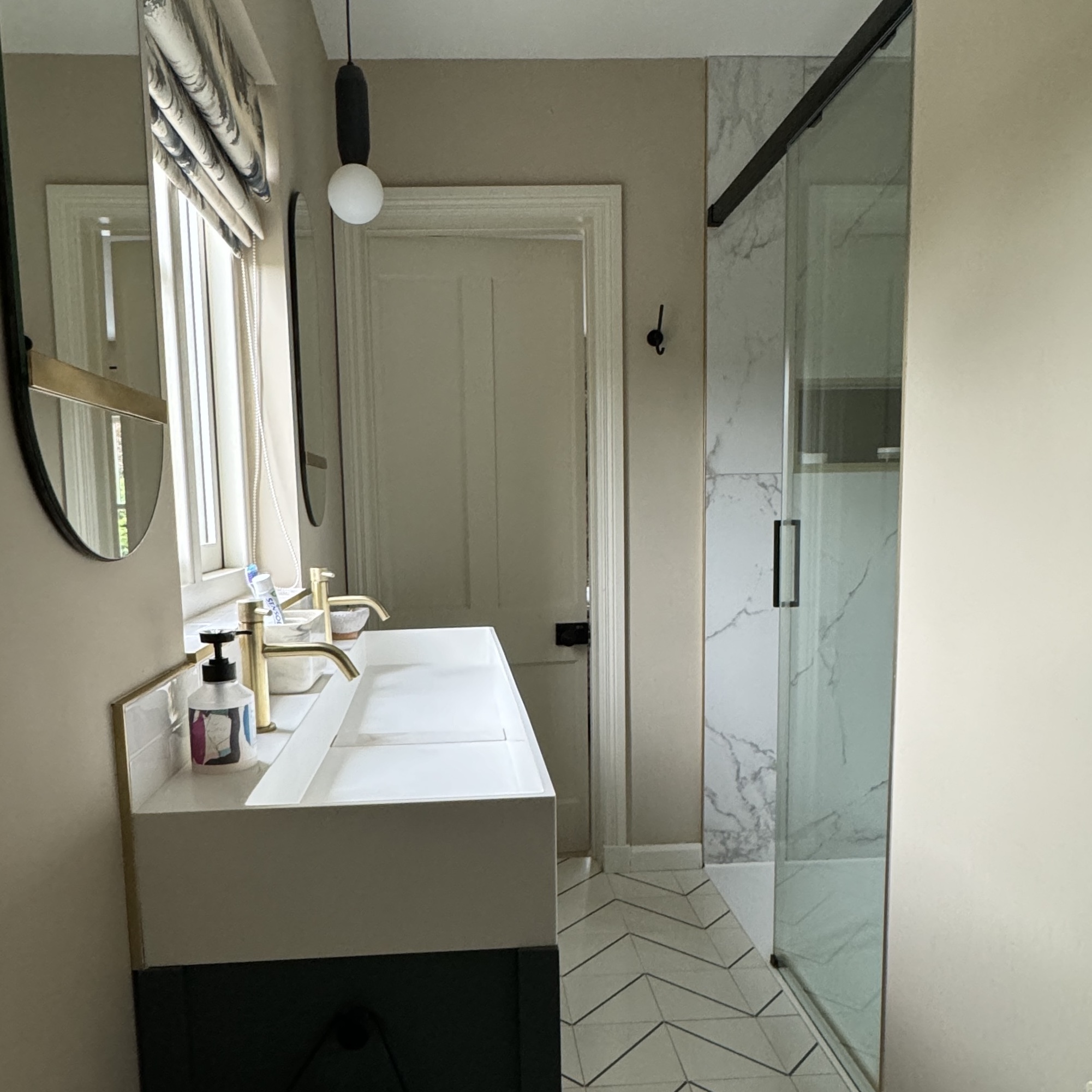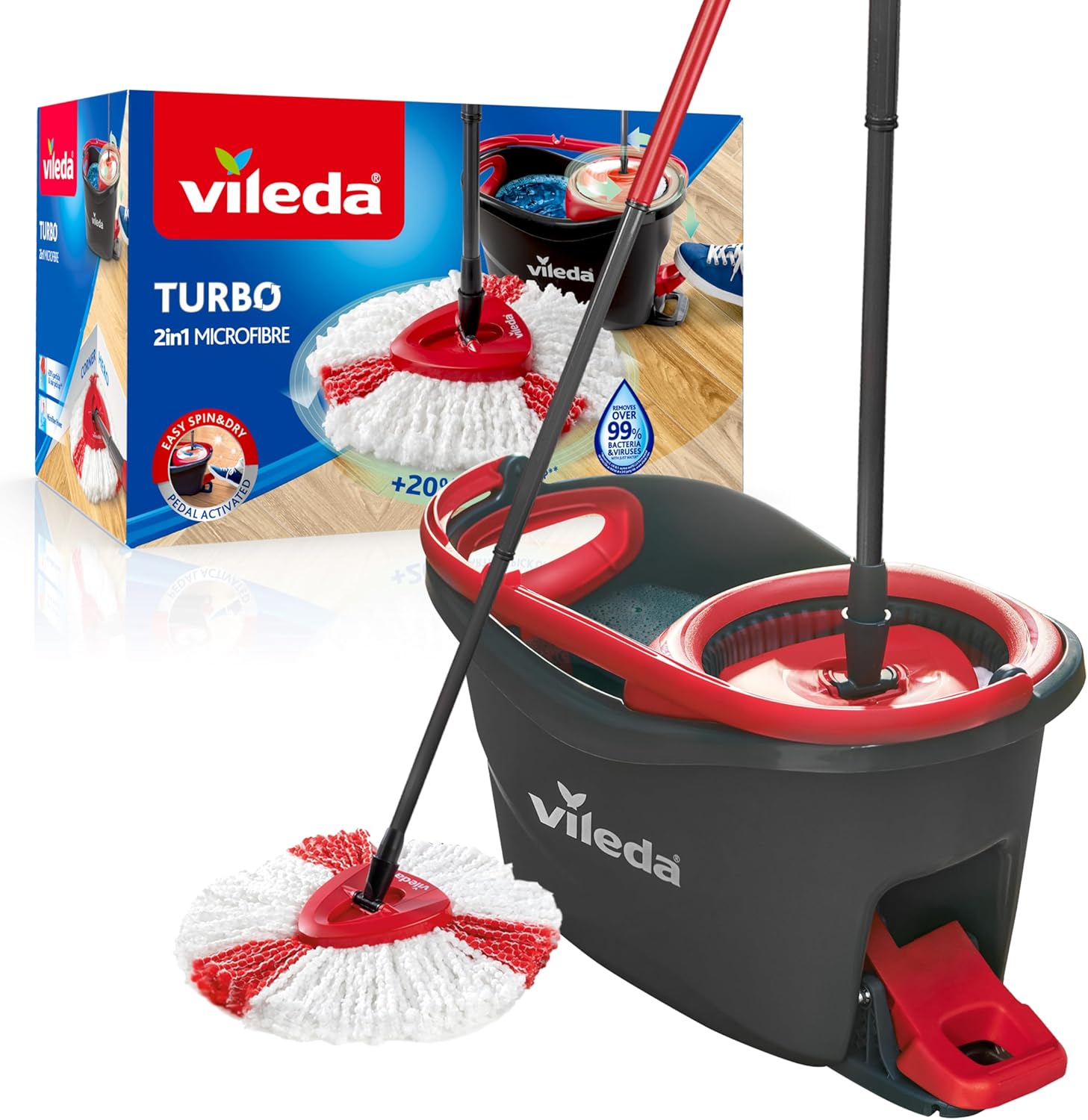I tried living with a wet room – here’s the truth about what this style of bathroom is actually like to live with long-term
Gorgeous on Pinterest, tricksy in real life


When I renovated my third home, a small barn conversion with an equally small guest en-suite, a wet room seemed the obvious solution. Stylish, space-saving, easy to clean… what could possibly go wrong? Plenty, as it turns out.
I’d seen so many serene spa-style wet room ideas on Pinterest and assumed the look would translate effortlessly. The idea of one continuous floor with no clunky shower tray or grimy enclosure felt modern and practical. Plus, in a space that wasn’t exactly spacious, going barrier-free promised to make the room feel larger and more luxurious.
We did get a specialist in to ensure the tanking, floor gradients, and drainage worked as they should, reasoning that it would be cheaper than fixing any DIY disasters! ‘We always recommend using a professional design and installation company that specialises in wetrooms,’ says Yousef Mansuri from C.P Hart. ‘Not using a professional can come at a hefty price if there are resulting leaks in the rest of the home. It could also nullify any insurance claims.’

Yousef is a specialist in both retail and trade bathroom design, with 16 years in the industry – 14 of them at the award-winning bathroom company, C.P. Hart. Now Director of Design, he regularly travels across Europe to the leading trade fairs, showrooms and manufacturing studios, ensuring his clients benefit from the most current, considered and cutting-edge bathroom expertise.
But despite doing our best to get everything right, reality was, well, wetter than expected! It was the first bathroom we tackled so, once done, it was in daily use while we worked on the family bathroom. Within weeks, I realised that while wet rooms photograph beautifully, they’re far less forgiving IRL.
I’m not saying it was a total disaster – it looked gorgeous, and our guests were always full of compliments – but living with a wet room taught me a few tough lessons about practicality, comfort, and the fine line between spa-like and soggy. Here’s what I learnt and what I’d do differently if I were ever tempted to travel the wet room road again.
1. Ventilation and heating are non-negotiable

A heated towel rail and underfloor heating will help mitigate moisture.
The first thing I discovered is wet rooms stay wet. I guess there’s a clue in the name! Even with a decent extractor fan, our little wet room never felt like it truly dried out. After each shower, condensation clung to every surface, the toilet roll curled up like papier mâché, and the air felt damp long after the steam had cleared.
It didn’t help that the room was windowless, but I thought the extractor would compensate. Turns out that ventilation in a wet room needs to work harder than in a conventional bathroom, as I discovered after chatting to bathroom designer Lisa Kyme, owner of Ripples Bathrooms in London.
Sign up to our newsletter for style inspiration, real homes, project and garden advice and shopping know-how
She recommends an extractor rated for continuous operation, paired with a humidity sensor so it runs automatically after showers. ‘A lot of steam and moisture is created in a shower room, so you want to ensure it is cleared as quickly as possible and ventilation is key,’ she explains. ‘Heating will also help, especially underfloor heating, which will help dry the tiles off much quicker so that you don't potentially end up with limescale residue on the tiles where they get wet.’
If I was doing it again, I’d fit both electric underfloor heating (I’ve used Devi electric heating mats in our current en-suite and really rate them) and a dual-fuel towel rail that can run in the summer (using our solar panels) when we don’t have the central heating on.
I’d also consider going for a more powerful extractor fan than the size of the room requires to ensure the air is being cleared more frequently. Think of a wet room as a constantly damp environment and design every element to help it dry as quickly as possible.

Lisa Kyme has been part of Ripples - the bathroom franchise founded by her parents - for more than 25 years. As the owner of the Ripples London showroom in beautiful Belsize Park, she brings a wealth of experience and passion for exceptional bathroom design.
2. Layout is everything

A short, hinged shower panel keeps the loo dry here.
We made the rookie mistake of placing the toilet a little too close to the shower area. Not only did this result in soggy loo roll but, if the showerhead wasn’t tilted at a specific angle and the lid was inevitably left up, the loo seat would get sprayed, too. Unpleasant.
In a wet room, decent floor gradients will help stop water migrating where it shouldn’t underfoot, but shower spray is much harder to control – especially if you are lucky enough to have a high-pressure water system and large showerhead. ‘Ideally, you want a minimum 1.4m distance between the shower head and other bathroom fittings, like the WC or basin,’ says Lisa. ‘It's generally more body spray than water coming directly out of the shower head that causes problems.’
In a small space, Lisa says a short, fixed glass panel with a hinged panel can be really useful as it can be rotated to extend the length of the screen or angled inward to keep the water more contained. ‘If you're using a much larger wet room screen, remember to bear in mind how to get that piece of glass into the property and up the stairs,’ she adds.
If I were considering a redo, I’d position the toilet diagonally across from the shower or behind a simple screen, like Merlyn’s 10 Series Frameless Wetroom Shower Screen. And I might also invest in a toilet roll holder with cover like with one from Victorian Plumbing and some contained storage, perhaps within a vanity unit or wall-hung cabinet, to keep spare toiletries away from any errant spray or excessive moisture.
3. The finish needs to flex

The large format porcelain tiles in our current en-suite are low fuss and sleek.
When it comes to surface finishes, I learned that minimalism has its downsides. We went with micro-cement polished plaster walls for a seamless, grout-free look. This was about 10 years ago now, so I felt very fancy and fashion-forward! But a few months in, fine hairline cracks began to appear, particularly around corners and door frames.
We were told this was perfectly normal, and it is, but it ruined the seamless finish I was after, and my OCD didn’t cope well. The problem was that micro-cement naturally develops micro-fissures as your house expands and contracts, and it was a very old house, originally a hay shed, which didn’t help matters. As the cement is built up in many thin layers, there was no cause for concern on the water damage front, but it didn’t look great.
My solution for our current en-suite, which isn’t a wet room but does have a generous showering space, was large-format porcelain tiles from Topps Tiles with rectified edges that enabled minimal grout lines. Each one is 60cm x 120cm, which our tiler did not appreciate! We colour-matched the grout so it’s barely visible, so the aesthetic is very similar, but the surface is much tougher and still very easy to clean.
For floors, I’d choose textured slip-resistant tiles, available from Tile Mountain, over polished concrete. ‘Slip-resistant tiles are measured on an R scale (ramp test) with R9 offering minimal slip-resistance to R13 providing the highest slip resistance. Aim for tiles with a slip rating of at least R11 for maximum safety on wet room floors,’ says tile expert James Bacon, from Tile Mountain.
4. Wet rooms look cool – but can feel exposed

Sliding doors keep me nice and cosy while showering without taking up space inside or out.
Aesthetically, our wet room was a solid win. The textural cement, slick concealed shower controls and smart slotty drain created exactly the modern, open feel I was channelling. But in actual use, stark naked, I felt weirdly exposed – even when the door was firmly locked! I missed the cosiness of a shower enclosure vs a wet room, and how they warm up quickly and keep out any sneaky drafts.
I also learned that a fixed showerhead, while beautiful, isn’t the most practical because you can’t dodge the water if you don’t want to wash your hair. And I regretted not having a handshower for rinsing the area down when cleaning. This isn’t really wet room specific, but I’d never choose a shower without the addition of a handset on an adjustable riser again.
In my latest shower, I was very happy to return to a regular enclosure and low-level tray, with sliding doors from Victorian Plumbing so I don’t lose any space inside or out – and of course I went for an overhead and handheld shower set-up.
5. Maintenance is easy but more involved
If there’s one thing I did appreciate, it was how easy the wet room was to clean. With no mildew-ridden silicone sealant or grubby grout lines, I could simply mop the floor and give the walls a quick wipe-down to keep the wet room dry. The channel-style drain never clogged, and the tanking held up perfectly.
However, the uncontained shower spray and higher moisture levels affected more than I’d anticipated. From the toilet cistern to the underside of the wall-mounted vanity, everything needed more frequent attention. Water spots, mildew and soap scum showed up fast if I didn’t get in there and dry the surfaces swiftly after showering.
I’d recommend investing in a good shower squeegee (this Keuco glass wiper from QS bathroom supplies is brilliant and can be hung on the shower controls as a massive hint to guests!). I also rate Vileda’s turbo spin mop from Amazon for speedy mopping and surfaces that dry quickly after.
What you'll need if taking on a wet room
Would I rule out wet rooms completely? Well, I haven’t attempted another yet but I’m not completely over the idea. If there is a next time, I’ll go in with my practical head firmly on. They can be stunning and practical when carefully planned, but, especially in small spaces, precision matters more than Pinterest popularity.

Linda Clayton is a professionally trained journalist, and has specialised in product design, interiors and fitness for more than two decades. Linda has written for a wide range of publications, from the Daily Telegraph and Guardian to Homes & Gardens and Livingetc. She has been freelancing for Ideal Home Magazine since 2008, covering design trends, home makeovers, product reviews and much more.
You must confirm your public display name before commenting
Please logout and then login again, you will then be prompted to enter your display name.

